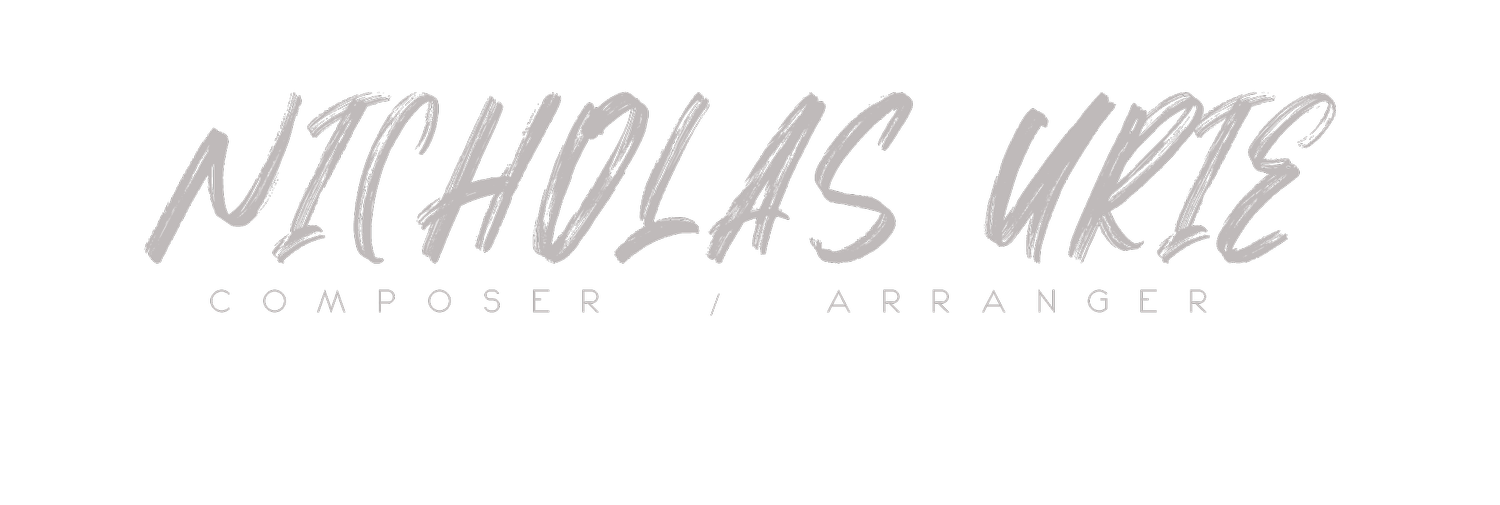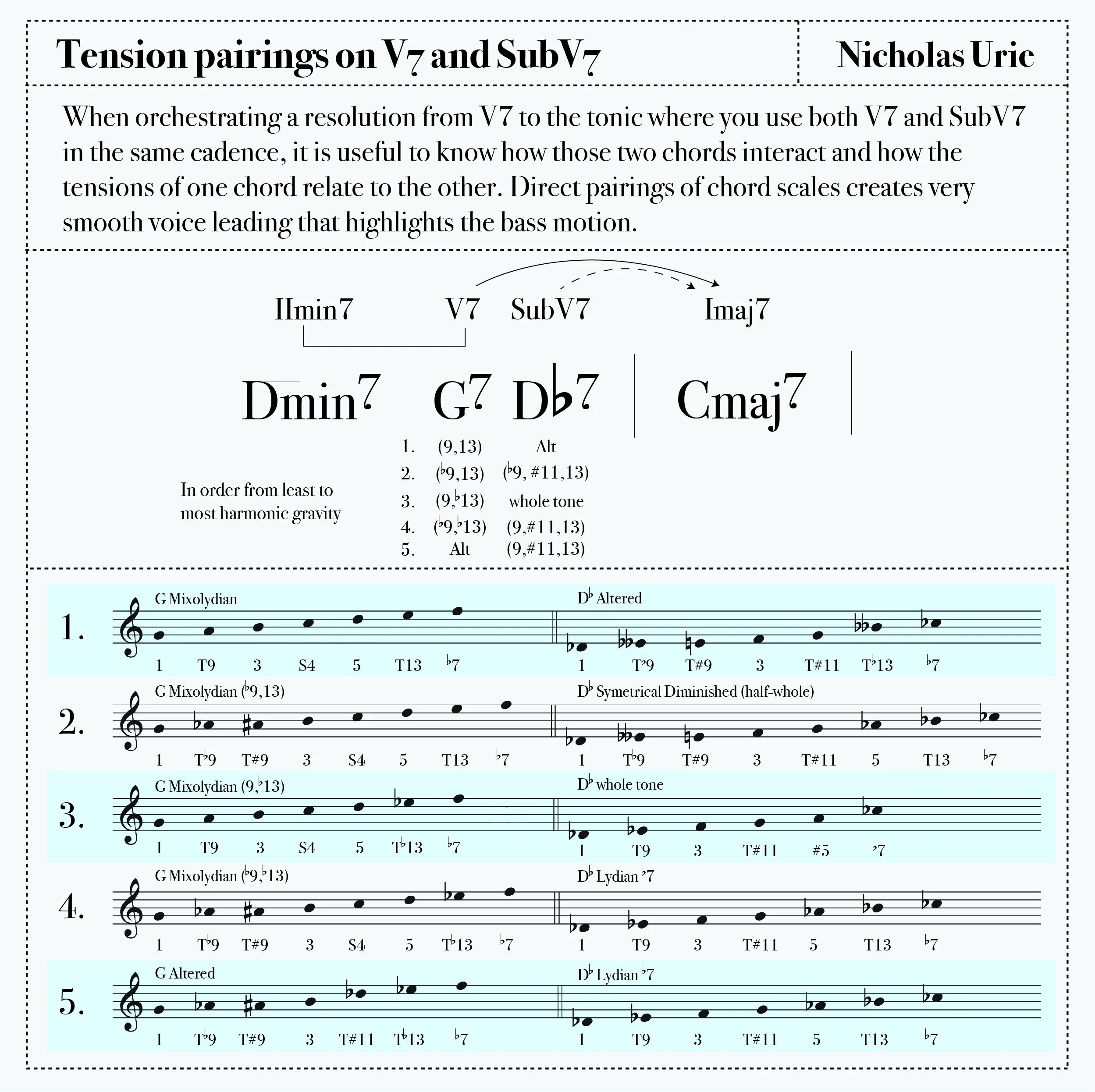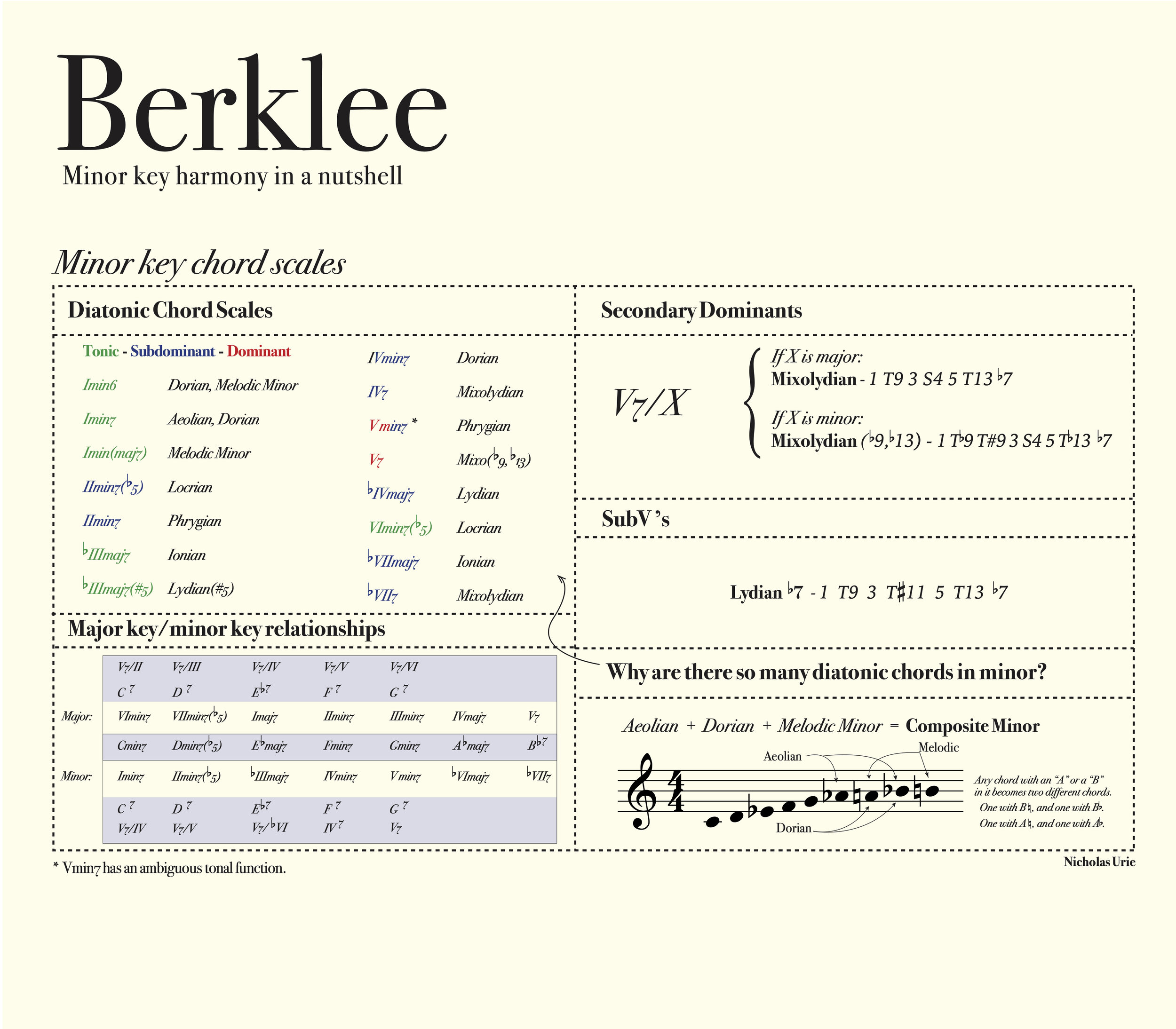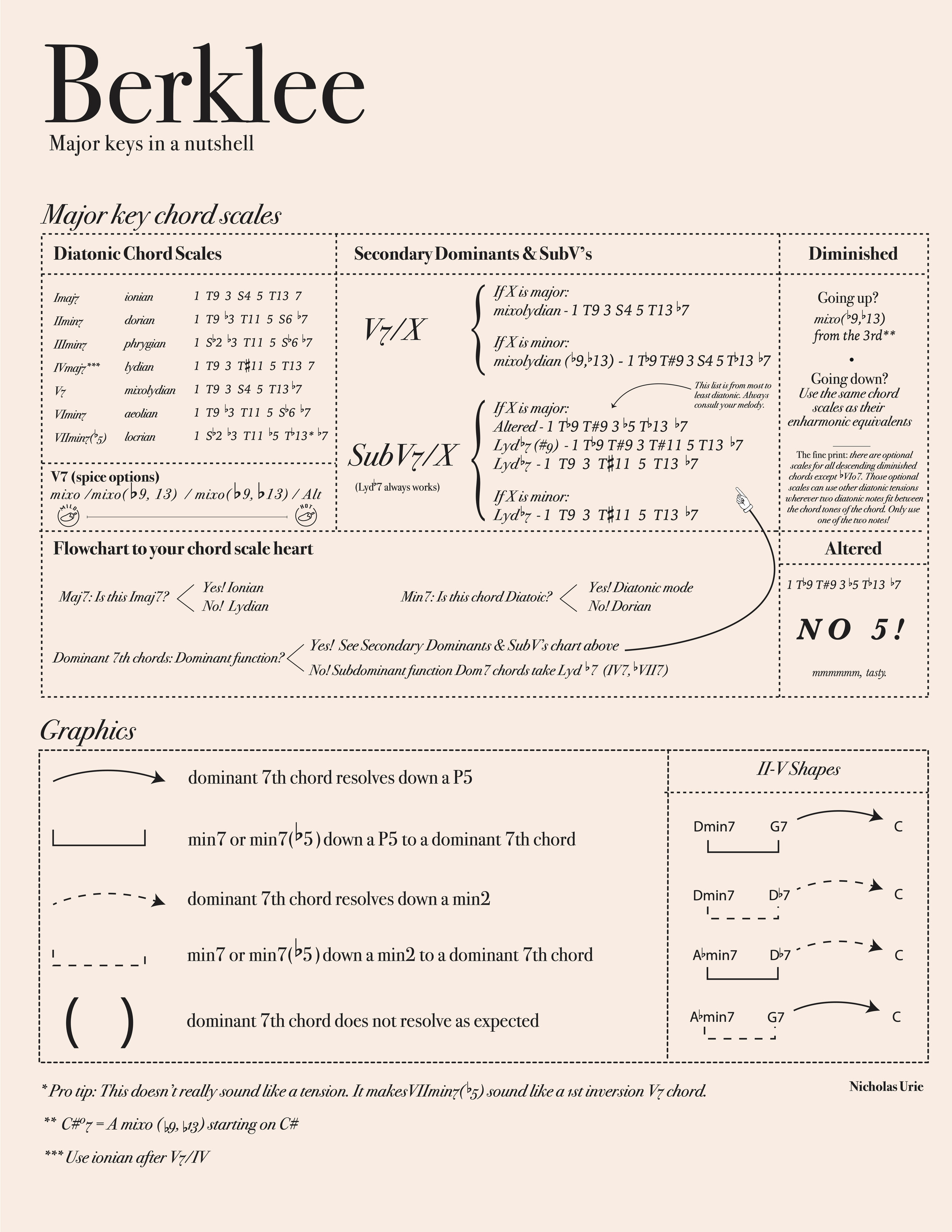Download a PDF of this post here.
A riff is a short, repeated phrase that can be used as a primary melody or as background accompaniment of a melody or improvised solo. Riff backgrounds are used to support the melody or an improvising soloist while developing the melodic materials of the composition, building energy, and defining the overall form. Riff backgrounds use a straightforward development strategy that increases tension by layering riffs on top of one another. A classic example of this layering follows a pattern where a new riff is added every time the form turns over, every two, four, or eight bars, or any other logical duration where the primary riff can be heard in a repeating cycle. The progression of energy in a solo with riff backgrounds tends to be a straight line from where the riffs begin to the climax at the end of the solo.
Why write solo backgrounds at all?
Bob Brookmeyer described solo backgrounds as a means of, “keeping your hands on the soloist.” Backgrounds allow the writer to ensure the soloist moves everything along according to the writer’s plan, not the soloist’s whim. Backgrounds are a way of influencing the soloist and ensuring that they:
Play their solo based on the musical materials of the tune.
Develop their solo in a way that leads logically to the next section.
Create a climax when the writer wants at a scale that suites the overall climax structure of the whole.
Creating energy behind a soloist
Repetition
Repetition of any riff creates a feeling of musical expectation. By repeating something you’re drawing the listener’s attention to it. Once a riff is clearly in the listener’s ear, new riffs that are layered on top of the primary riff are more immediately understood and begin to create their own musical expectations. The greater the listener’s sense of expectation is the more tension is created.
Density
Density can be either harmonic, melodic, or rhythmic. As ensemble density increases the soloist must alter their solo in order to be heard and to match the vibe of the given moment. Increasing ensemble density pushes the music forward and goads the soloist into fulfilling the solo section’s formal requirements.
Harmonic density can be the number of voices used to harmonize a given line (octaves, 6ths, 4wc, clusters, etc.). Thicker voicings create a fuller, more energetic sound.
Melodic density is the number of individual lines being heard in counterpoint.
Rhythmic density is the amount of syncopation, the interlocking of rhythms between orchestral sections, or note velocity.
Registration
Changing the registration of a riff up an octave amplifies the amount of tension and excitement generated by it sonically.
Dynamics
By increasing the volume of a riff the soloist will have to increase their volume, as well as register if they want to be heard clearly. This allows the writer to influence what the improvised solo sounds like and how and when it climaxes.
Pre-compositional Process
A little pre-compositional planning will help you write backgrounds that flow logically into the next section. If you know where you’re headed you’re more likely to write in a direct, effective way.
Determine the length of your riffs.
Consider of solo form, overall length of the improvised section within the whole of the piece, desired complexity of counterpoint created by the layered riffs, etc.
Is the primary riff the whole form of a blues? Is it two, four, or eight bars? The type of tune you’re arranging will determine what is feasible. Tunes with more open harmonic sections lend themselves well to riff backgrounds. Similarly, blues is an obvious choice because of the history of using riff melodies based on blues scales.
The subsequent riffs are often progressively shorter than the primary riff. Shorter cycles build energy faster than longer cycles. An example of how you might build energy: riff-A is eight bars, riff-B is four bars, and riff-C is two bars.
2. Decide the number of layers you want the backgrounds to contain.
The standard big band riff background on a blues is three layers, one for each orchestral body (saxes, trumpets, and trombones). More can also be effective if you blend the orchestral sections.
3. Decide the number of repetitions.
For example, if we take the 8, 4, 2 bar riff cycle from above we will hear the eight bar riff-A three times. Riff-B will begin at the beginning of the second presentation of riff-A and will be heard four times in total (two times for every eight bars of riff-A). Riff-C will begin at the beginning of the third presentation of riff-A and will be heard four times in total (four times for every eight bar riff-A).






























